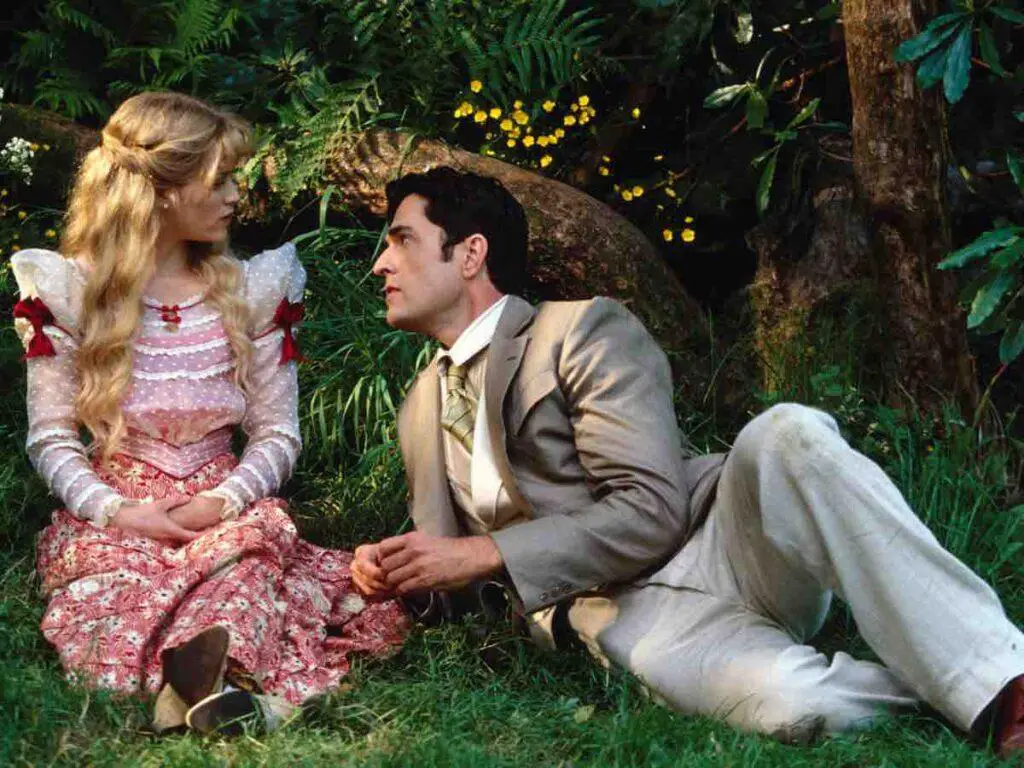Oliver Parker’s The Importance of Being Earnest is a faithful adaptation, wonderfully bringing alive Oscar Wilde’s play on screen.
Between films and theater plays, it is the former that has to compete with reality. A play, from beginning to end, looks artificial, unreal — the set, the lack of a fourth wall, etc. The audience is not seeing it through the eyes of a specific character nor are they focusing on a single actor. Everything is given to the viewers and they choose what to see.
Recreating a play originally written for the stage into a film, is like making a huge jump from artificiality to reality. On stage — the artificiality, the fake background, the overemphasized and loud manner of speech cries out “this is not reality” or “you will not see this anywhere else”. On screen — the setting is real, the houses are real, the entire city is recreated to almost exactly as it might have looked it 1890s; everyone and everything on the screen is forcing the viewers to believe in their world. This makes the story real.
The Importance of Being Earnest, the film directed by Oliver Parker (who also adapted other works by Wilde for the screen), in my opinion, is a faithful representation of the play written by Oscar Wilde. When you see the film on screen you are transported a century back in time. The play was written in late 19th century and set in the same time period too. The film was made more than a hundred years later. The audience had changed. No one talked like they did in the play anymore. The world of the play no longer existed. Everything was recreated and the result was praiseworthy. The entire cast is exceptional in their roles and the city of London looks beautiful.
Bringing a play from the stage to the screen gives room for a lot of things. On stage it is the words, actions, expressions, and emotions of the actors that make the play. On screen it is all of those things, as well as the locations, that are used to tell the story. In the play there are only three backdrops (something usual for a play). Algernon’s apartment in Albany, and the other two at Jack’s country house. The film, however, could not be limited to just three locations. The director takes us to several sites; splitting conversations across days and different venues, something done obviously to be faithful to both the lovers of the original play as well as regular film watchers.
There are a few changes or modifications made to the story by the director. By making the male characters older (from late 20’s to late 30’s), the director aims to highlight Wilde’s concept of immaturity being amongst those unmistakably considered wiser by age. By further increasing the age difference between the men and the women of the story the director is trying to reinforce the fact this story is a satire of romance. Gwendolen’s tattoo of Ernest displays her childishness and immaturity, as well as her passion for the name of Ernest. Similarly, Cecily’s diary’s pages coming to life with the appearance of Algernon as her ‘Prince Charming’ give visual references to the thought processes of young girls of the Victorian age.
Jack’s real name, a twist in the film, made a lot of sense to me. It brought a whole new meaning to Jack’s last line about how vital it is to be Earnest. It indicated how Jack needed to be everything but Earnest to be Ernest. The director’s take as a whole makes sense to have that ending, and comparing only the endings is out of question. I am uncertain if the opposing ending makes a difference to me. But I do know it makes the film a twisted adaptation of Wilde’s play.




